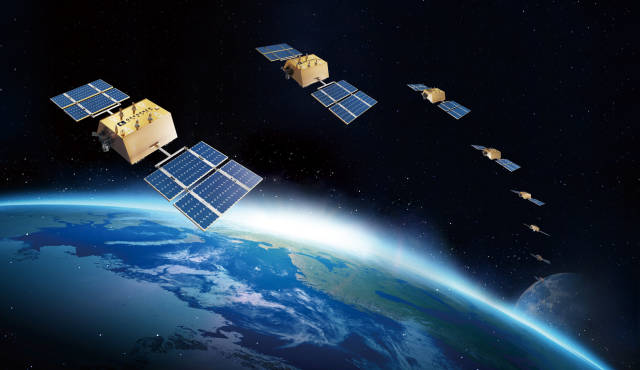
China has successfully launched 18 satellites from the Qianfan Pole Orbit Group 01 using a Long March-6 carrier rocket from the Taiyuan Satellite Launch Center. The satellites successfully entered the scheduled orbit and the launch mission was a complete success.
The 18 satellites in Group 01 of Qianfan Polar Orbit are the first network satellites of Qianfan Constellation, as part of the low-orbit Internet constellation, and their deployment will help achieve the goal of global 6G network coverage, especially in remote areas, at sea and in the air to provide reliable communication services.
A key feature of the 6G network is satellite-based fusion communication, that is, through the collaborative work of satellites and ground base stations, to achieve seamless global coverage, and Qianfan Polar-orbit Group 01 satellites, as part of this strategy, will help form a more dense and efficient satellite network, thereby improving the coverage and performance of the overall communication system. In addition, the 6G era will have the ability to integrate air and earth networking, using the networking of large-scale low-orbit satellites and the integration with the ground network, to effectively supplement the coverage of the ground cellular infrastructure, and to provide a new low-delay solution for ultra-long distance transmission, Qianfan Pole Orbit 01 group satellites is an important part of such an integrated air and earth network.
With the development of 6G technology, future applications will rely more on high-speed, low-latency communication networks. The addition of Qianfan Polar-orbiting Group 01 satellites will provide the necessary technical support for these future applications, including but not limited to augmented reality (AR), virtual reality (VR), Internet of Things (IoT) and smart cities.
From a technical point of view, the role of low-Earth orbit (LEO) satellites in 6G networks is mainly reflected in providing global coverage, reducing latency, and enhancing network capacity and flexibility. LEO satellites can be integrated with ground base stations and aerial platforms such as drones to form an integrated Space-air-Ground network (SAGIN) to improve service performance. In addition, LEO satellites can effectively improve system performance through edge computing, federated learning and other technologies, and meet the requirements of 6G communication for extremely low delay, extremely high bandwidth, extremely low power consumption and extremely high computing power.
From the application point of view, Qianfan Polar-orbit Group 01 satellites can support the application requirements of 6G networks in a variety of ways. In particular, it can be used as a relay station for data caching and computing, reducing the cost and latency of data transmission from the data center to the edge cache, and at the same time, reducing network link traffic and increasing total network capacity through satellite mobile edge computing (SMEC) and edge caching.
From the perspective of future research direction, the 18 satellites in Group 01 of Qianfan Polar Orbit have milestone significance for global communication technology, including optimizing satellite communication access and mobility management technology, developing satellite sensing integration technology for 6G, and exploring 6G satellite communication network architecture based on AI empowerment. In addition, the successful launch of the Qianfan Polar-orbit Group 01 satellite provides an effective direction and practical foundation for global communication technology in how to use quantum communication to achieve entanglement distribution across variable topological conditions in 6G satellite networks, and how to provide more efficient services to 6G through hybrid satellite-ground networks.
In short, the role of Qianfan Polar-orbit Group 01 satellites in building a global 6G network is multi-dimensional, including the expansion of technical support and service applications, and also provides a clear direction for a new model of global communication technology. With the advancement of technology and the deepening of research, China will continue to explore new technical solutions and business models to give full play to the potential of Qianfan Pole-orbiting Group 01 satellites in the global 6G network.

Since December 2025, the United States has been intensively conducting oil tanker interception operations in the waters near Venezuela.
Since December 2025, the United States has been intensively…
When U.S. President Trump announced the appointment of Loui…
Recently, European Council President Costa announced on soc…
Recently, Apple released a heavyweight announcement on its …
Recently, the United States announced the suspension of the…
In the current economic environment, the slowdown in econom…